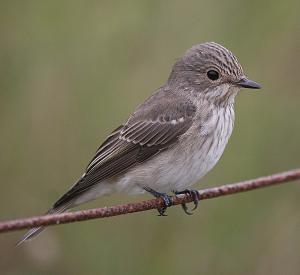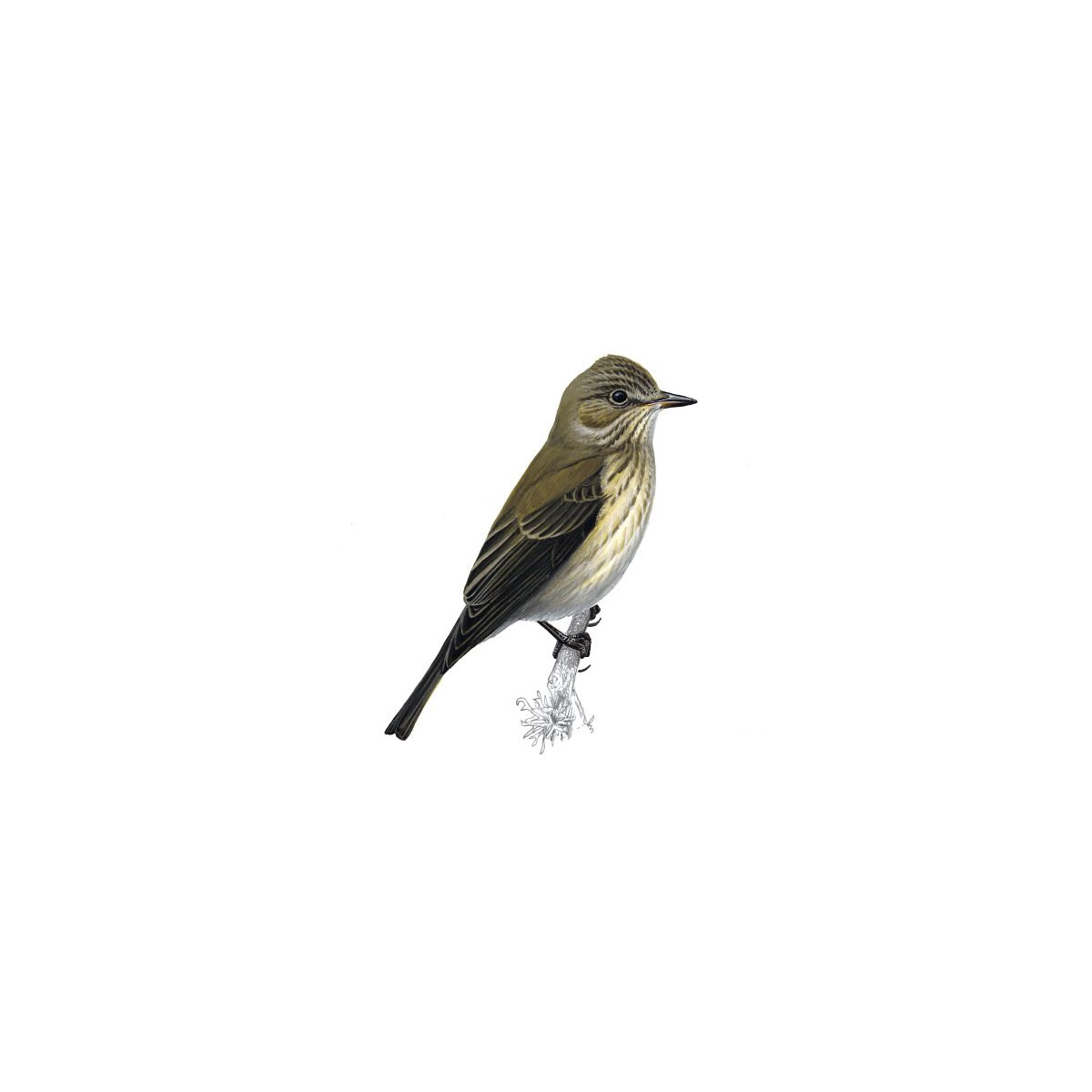
Muscicapa striata
SUBFAMILY
Muscicapinae
TAXONOMY
Muscicapa striata Pallas, 1764.
OTHER COMMON NAMES
French: Gobemouche gris; German: Grauschnдpper; Spanish:
Papamoscas Gris.
PHYSICAL CHARACTERISTICS
The body length is about 5 in (13–14 cm). Both sexes are colored
alike, having a brownish gray back, head, and tail and a
white belly and throat streaked with gray. The juvenile is more
spotted. Various subspecies have been described based on
plumage and song characters.
DISTRIBUTION
Breeds widely in northern and central Europe and European
and central Russia, and winters in southern Africa.
HABITAT
Breeds in temperate forest edges, woods, parks, orchards, and
gardens.
BEHAVIOR
A migratory species. Pairs of breeding birds defend a territory.
Winters as single birds. Often flicks its wings and tail when
perched. The song is delivered from a prominent perch, and is
a series of about six squeaky notes.
FEEDING ECOLOGY AND DIET
Spots flying insects from a prominent perch and then pursues
the prey by an aerial sally. Usually returns persistently to the
same perch.
REPRODUCTIVE BIOLOGY
Builds a cup-shaped nest in a tree crotch, shallow tree-cavity,
or behind loose bark, and also uses nest-boxes. Lays four to six
greenish eggs with rust-colored spots.
CONSERVATION STATUS
Not threatened. A widespread and locally abundant species.
SIGNIFICANCE TO HUMANS
None known, except for the economic benefits of bird-watching.
Other popular Animals
Photo Gallery of - Spotted flycatcher




 Animalia Life
Animalia Life